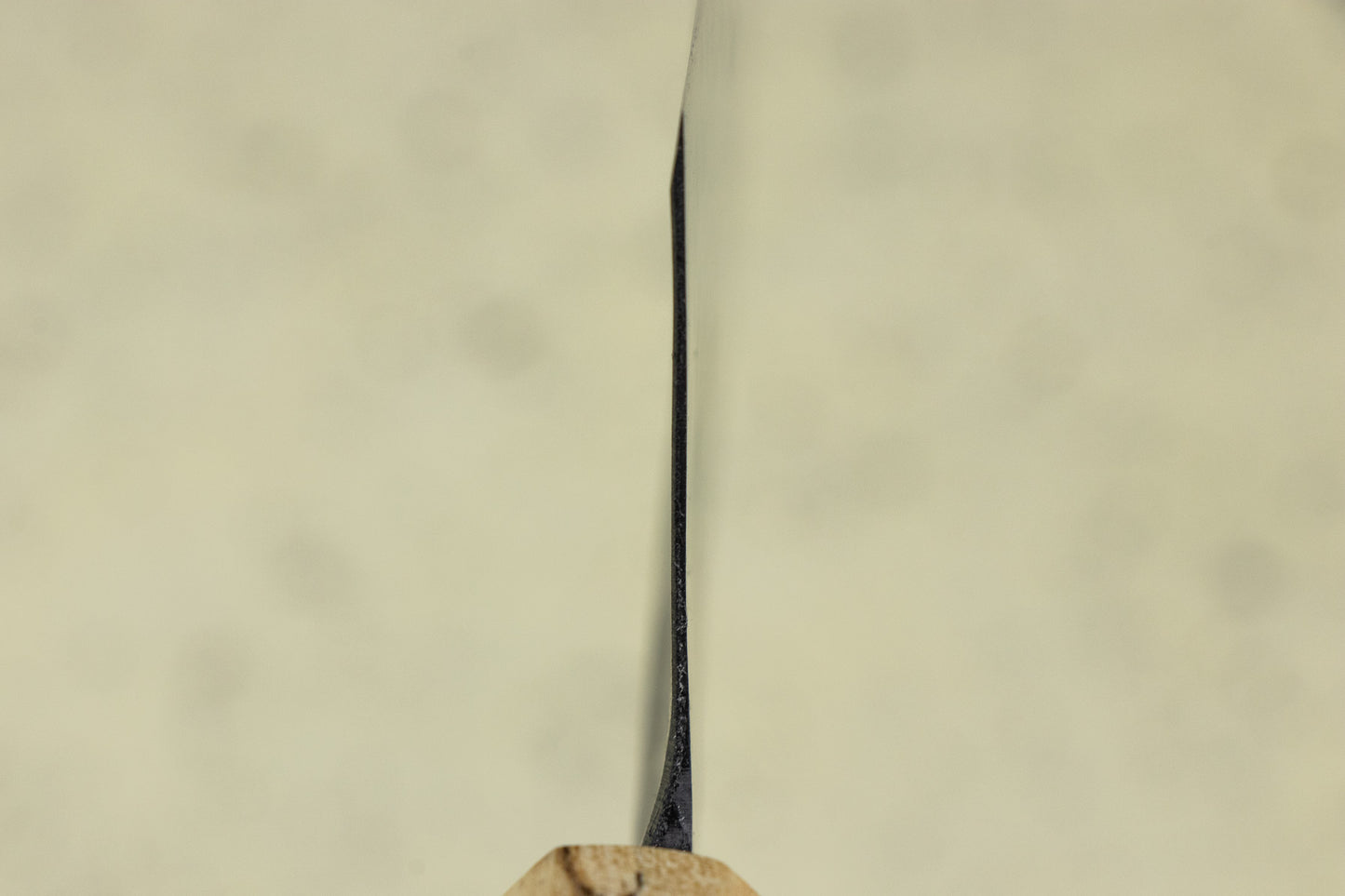Suzuki Uchi Hamono Shirogami Kurouchi Single Bevel Nakiri 165mm
Suzuki Uchi Hamono Shirogami Kurouchi Single Bevel Nakiri 165mm
Couldn't load pickup availability
Partially because of this unique history, Suzuki-san’s kitchen knives look pretty unorthodox compared to other Japanese blades, especially his nakiris. His knives are single bevels with a flat back and forged with a unique ridged spine which Suzuki-san calls the ‘ear’ of the knife. The spines on the blades are super thick at around 5mm, but the rest of the knife is uber thin, about 1mm. As soon as we started carrying them, knife nerds worldwide were eager to get their hands on them and try these Bizarro blades for themselves. Just about everyone who tries one falls in love immediately, and here’s why:
Thin blades glide through food effortlessly, but super thin knives can become almost flimsy and are far more prone to damage. The thick ‘ear’ spine gives the blade much-needed rigidity, significantly increasing its strength. The ‘ear’ ridge along the spine also pushes food away from the face of the knife, creating incredible separation, so you never end up with a huge mountain of food falling over the top of your blade. This seemingly blasphemous addition of traditional sickle forging techniques to kitchen knives is next level. Suzuki-san’s blades are some of the most exciting and inventive kitchen knives we’ve seen.
About Suzuki Uchi Hamono: Tsukasa Suzuki is a talented blacksmith from Yamagata prefecture. He learned to forge from his father and has been blacksmithing for over 40 years. Suzuki-san is known primarily for his hand-forged sickles, but he also makes some incredible kitchen knives, unlike anything we've ever seen before! These single-bevel versions of standard knife shapes take some getting used to, but they allow food to fall away from the blade effortlessly.
| Shape | |
|---|---|
| Blade Length | | |
| Blade Height | |
| Blade Thickness Above Heel | |
| Weight | |
| Steel Type |
Rust Prone ⓘ
This knife can rust, click to learn more.
|
| Rockwell Hardness | 62 - 63 |
| Edge/Bevel | |
| Handle | Wa (Japanese) Handle - Octagon Maple |
| Made in |
Knife Care
Knife Care
Shipping and Returns
Shipping and Returns
We aim to ship your order within 1 business day at Knifewear, if there is a hold up, we'll aim to let you know and give you a timeline.
We offer $3 shipping on orders over $100* anywhere in Canada and $200* to customers in the USA. We ship worldwide, and offer up to the minute rates from our shipping partner DHL.
*Konro Grills and some other larger items are excluded from the free shipping offer.
How do I make a return on an online order?
No worries, we've got you sorted. Head over to https://knifewear.com/returns and follow the prompts.
Can I pick up my order Curbside / At the store?
Absolutely, as long as all the items you are looking for are in stock at the location you want to pickup from, you'll be able to select that at the checkout. If one or more items aren't at your preferred location we are happy to ship it to you.
Request Additional Info
Request Additional Info








